I’ve been helping kids tell their imaginative stories for almost twenty years. I once believed the myth that kids who have autism, and sometimes kids who have visual impairment or deafblindness, are not creative—that they are rigid and...
Writing
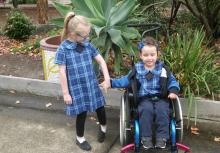
Posted by Debra Goodsir
I’m a TVI in NSW, Australia, and started working with a girl named Sarah halfway through her first year of Kindergarten. She is in a regular class with a class teacher and a wonderful teacher aid, Leanne Prior, who has been working with her since she...
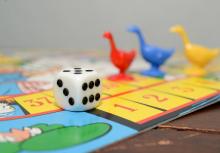
Posted by Penny Rosenblum
Think back on your own childhood and time with family and friends and you’re likely to remember a game you enjoyed playing whether it was a board game, word game, or sporting activity. Games can help your child develop skills such as:...
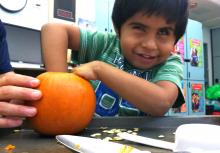
Posted by Megan Mogan
Around 4 pm every day, something wonderful happens to me. I get to reunite with my 3 children after school/work and find out how their days went. I get to hear about spelling tests, lunchbox trades, science experiments, and playground drama....
Posted by Liz Eagan
Event planning is a great way to incorporate literacy and the Expanded Core Curriculum (ECC) into student-led activities! While this particular example was done at Easter, there are many opportunities throughout the year to practice reading, writing...
Posted by Liamsmom
My son Liam is 7 years old and is deafblind. He is a braille reader and as of lately (this school year especially) he has really taken an interest in writing in braille as well! Below are 10 ways that I try to encourage this new skill at...
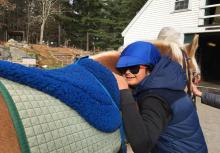
Posted by Keveny Glynn
One of my students participated in an 11-week therapeutic riding program this fall and we wanted to find a way to incorporate literacy, communication, social interaction, and other skills. He kept a weekly "journal" of his experience, which is...
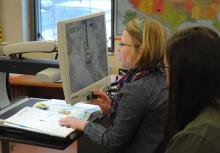
Posted by Liz Eagan
Why is the grass greener on the other side? “'The grass is always greener on the other side' because the other side knows what fertilizer to buy," I often heard growing up. But is it? Is the grass greener because they...

Posted by Charlotte Cushman
The holidays are an exciting time of year for children and there are lots of opportunities to incorporate literacy into the fun! The ideas here include suggestions to make Christmas and Hanukkah more accessible to children with visual impairments or...

Posted by Roxana Cziker
This is the first of five parts created by Low Vision Therapist, Dr. Roxana Elena Cziker, focusing on the needs of students with Cerebral Visual Impairment (CVI) The series is designed to address challenges for children with CVI who...

Posted by Tracy Fitch
Braille writing instruction will happen at the same time as braille reading instruction. It is important to teach all braille learners the parts of the brailler, along with inserting paper. There are a number of braille writers available and...
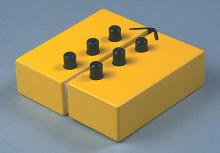
Posted by Tracy Fitch
A Swing Cell is designed to help students understand the relationship between the braille cell and the keys on a braillewriter. In the closed position, the removable pegs inserted into the blocks represent the dots in a braille cell. In the open position, the...
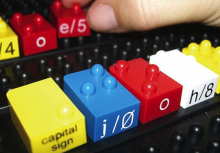
Posted by Liamsmom
My son Liam is 7 years old and will be starting 2nd grade this school year. He is deafblind, uses tactile American Sign Language and is a braille reader.
I love TACK-TILES®. I have often been asked how we used Tack-Tiles with Liam...
Posted by Liamsmom
My son Liam is 7 years old and he is deafblind. Liam loves reading and writing braille. I thought a great activity for summer break would be to learn about writing letters to our friends and family. It was my hope that it would be fun and...
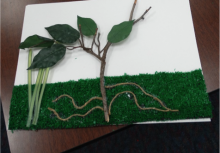
Posted by Liz Eagan
Tactile books are a great way to foster the development of literacy skills with any child who is visually impaired, including children with other significant disabilities. These can be used at home for enjoyment, to support understanding and anticipation...
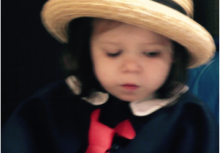
Posted by Laurie Hudson
In Brown Bear Part I, posted earlier on Paths to Literacy, I used a short video of a teaching segment to demonstrate what the concepts in my iBook, “Introducing Braille,” might look like for a struggling reader with multiple impairments. ...
Posted by Liamsmom
My son Liam is a first grader in a mainstream classroom and he happens to be deafblind. I was inspired recently by a classroom letter that was sent home in his backpack. The children were expected to write stories that had a beginning, middle,...
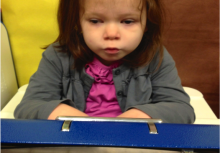
Posted by Laurie Hudson
THE BIG PICTURE
In my iBook “Introducing Braille,” I largely used videotaped examples of bright, enthusiastic young students to show ways to “Make It Fun,” “Make it Developmental,” and “Make It Meaningful...

Posted by Gwyn McCormack
Sighted children develop and gain knowledge and experience through incidental learning. During their first few years of life they have exposure to a vast range of visual symbols that convey meaning. They observe children and adults looking atprint and gaining...

Posted by Megan Mogan
Buried deep in the Paths to Literacy archives is a little post called Adapted Adapted Literacy. It describes how my TVI colleague Sheryl Katzen and I worked together to adapt parts of our school’s conventional English Language Arts Curriculum for...

